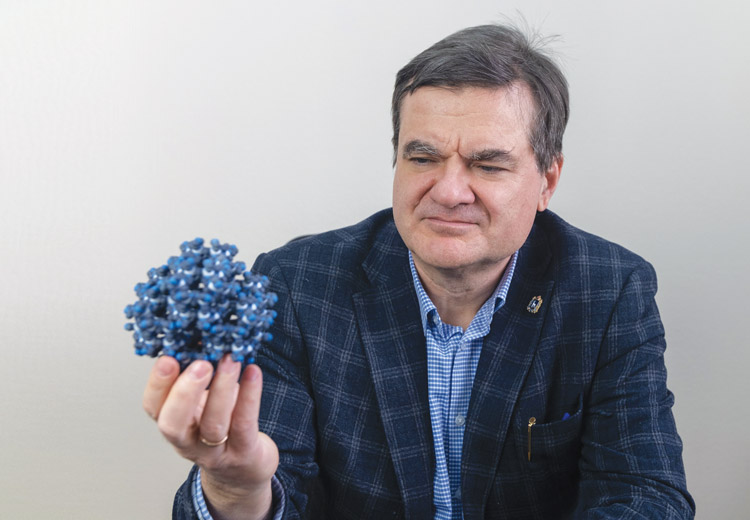Designing the right material for the job

At the Samara Center for Theoretical Materials Science, researchers are developing software to quickly and accurately model the performance of innovative materials
When identifying the most effective material for a task, whether the purpose is conducting electricity or carrying drugs around the body, developing theoretical predictions before carrying out physical experiments can streamline the process. Using computer-aided design, scientists can produce models of their predictions that are faster, cheaper and more accurate than laboratory experiments.
At the Samara Center for Theoretical Materials Science (SCTMS), which is a department at Samara State Technical University (Samara Polytech), scientists are using such predictive techniques with great success. SCTMS was established in 2013 with funding from the Russian government’s mega-grant programme. By 2017, SCTMS had become entirely self-supporting. It has since expanded its activities to create an experimental laboratory to test its theoretical predictions. “The main field of our own experimental base is metal‐organic frameworks,” says Professor Vladislav Blatov, director of SCTMS. “We started working on this class of substances in 2003, long before the centre was established.”
A key characteristic of metal‐organic frameworks is their high porosity. They can easily be modified and, depending on their structure and chemical composition, obtain different properties that can be used for a variety of applications. For example, metal‐organic frameworks can be used as containers for targeted drug delivery in the body. They can also absorb and store gas for extraction at a later date and can be used as catalysts for chemical production. “We work with any solid materials, from metals to proteins, and have already started working with liquids, as well as analysing gas phases. Our main specialisation is solid crystalline substances. The methods we create are universal and can similarly work with different materials,” says Professor Blatov.
Today, SCTMS employs 25 researchers, who work in 10 research areas and annually publish about 30 co-authored journal articles in titles including Nature and Chemical Science. The centre cooperates with more than a dozen laboratories across the world, taking a highly collaborative approach to research. “In the field of predicting substances, we are leaders and work with many laboratories over the world, helping them not only to predict new metal‐organic frameworks but also to study known substances of this class,” Professor Blatov says.
Samara Polytech researchers recently completed a project for the Polytechnic University of Milan researching potential materials for use in semiconductor circuits. The Milan university specified the requirements for the material composition and properties: organic crystals that could easily be split into thin and perfectly smooth plates. Samara Polytech scientists then analysed around 500,000 substances that could meet these requirements, selecting 11 for further experimentation.
SCTMS has also collaborated with the University of Manchester. The UK colleagues developed software that modelled the growth of crystals, while Samara Polytech scientists extended this software to determine the components of the crystal and assemble the entire crystal from scratch.
The centre is working on a project with the Freiberg University of Mining and Technology in Germany, searching for an alternative to lithium for batteries and accumulators. Samara Polytech scientists are using computer tools to identify substances in which sodium ions can migrate to provide an electric current. They are also working on a joint project with colleagues from the heat and power engineering department at Samara Polytech. Together, the two faculties are developing thermal insulation coatings for turbine blades of aircraft and spacecraft engines, which would resist high temperatures without damage.
Recently, SCTMS received a new grant and, in cooperation with colleagues in China, Samara Polytech scientists will develop software that searches for substances from a specific class of materials, such as electrides. As the centre’s international partnerships expand, so too will its discoveries and impact on the field of materials science.
Find out more about Samara State Technical University.